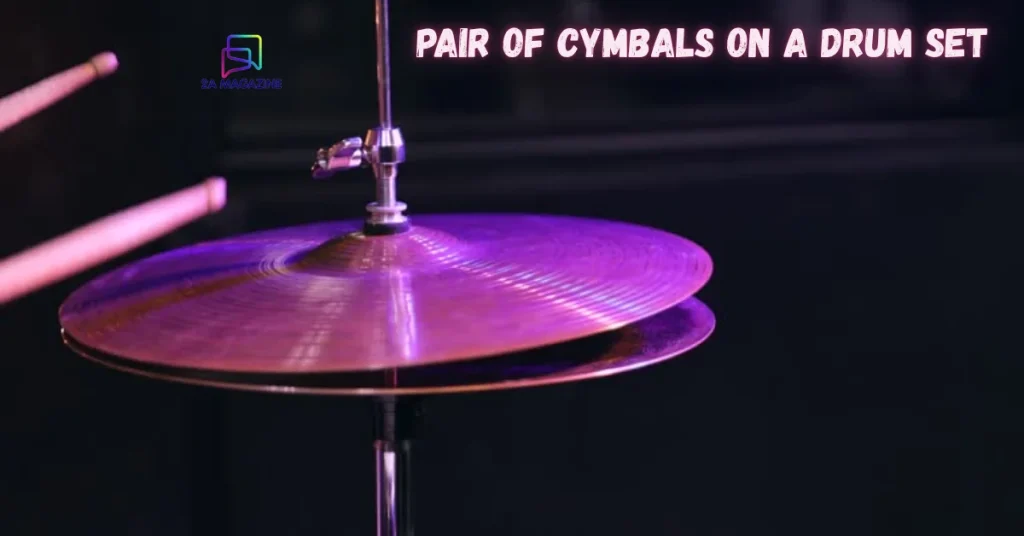Introduction to pair of cymbals on a drum set
When you think about a Pair of Cymbals on a Drum Set, the first things that often come to mind are the pounding bass drum and crisp snare hits. However, there’s another key player in this rhythmic ensemble: the pair of cymbals. These shiny, metallic discs do more than just add visual flair; they bring depth and character to your music. Each crash and ride can evoke different emotions or elevate a performance from ordinary to extraordinary.
Whether you’re a seasoned drummer or just starting out, understanding how to select and use a pair of cymbals on your drum set can transform your sound landscape. In this deep dive, we’ll explore the various types of cymbals available, their unique sounds, proper setup techniques, care tips—and much more! Get ready to unlock new sonic possibilities with those essential pairs of cymbals!
Liked what you read? This related post is another hidden gem.
Exploring cymbal types showcases their distinct sonic identities and the specific roles they play in a drum set.
Cymbals are the voice of a drum set, each type offering its own distinct sound. Their tonal range stretches from piercing highs to smooth, low resonance, giving drummers plenty of expressive choices.
Hi-hats are essential for keeping time. They produce a sharp chick sound when closed and a washier tone when opened.
Crash cymbals create explosive accents in music. Their quick decay adds excitement, making them perfect for punctuating beats.
Ride cymbals provide sustained tones that can be both smooth and complex. Drummers often use them to maintain rhythm while adding texture.
Splash cymbals deliver quick bursts of sound with their smaller size. These add flair without overwhelming other elements in your playing.
China cymbals offer an exotic edge with their trashy, loud character. They’re great for dramatic moments or transitions in songs. Different cymbals each add a unique flavor, enriching the band’s overall sound landscape with depth and variety.
Choosing the right cymbals for your drum set
Choosing the right cymbals for your drum set can be a game-changer. There are many factors to consider, from sound preference to musical style.
Think about the genre you play. Rock drummers might prefer bright, cutting sounds, while jazz musicians often favor warmer tones. Each type of music demands a different character from cymbals.
Next, evaluate the size and thickness. Larger cymbals generally provide more volume and sustain but may take up more space in your setup. Thinner cymbals give a quick response with a darker tone.
Don’t forget about material! Bronze is popular for its rich sound quality, whereas brass offers an affordable option with distinct characteristics.
Take time to listen before purchasing. Visiting a local store or trying out various brands will help you find what resonates best with your playing style. Trust your ears; they know what works for you!
Proper setup and placement of cymbals
Setting up your pair of cymbals on a drum set can significantly influence your playing experience. Start by positioning them at an angle that feels comfortable for you. This ensures easy access while maintaining natural wrist movement.
Consider the height as well. Generally, cymbals should align just above shoulder level when seated. This helps avoid strain during long sessions and allows for more dynamic play.
The spacing is crucial too. Keep enough distance between the hi-hat and crash or ride cymbal to prevent accidental hits but close enough to maintain fluid transitions.
Pay attention to how each cymbal interacts with others in terms of sound projection. Experimenting with placement can reveal unique tonal combinations, enhancing both your rhythm and creativity in performances.
If you enjoyed this post, you’ll love what’s featured on 2A Magazine.
Caring for your cymbals to maintain their quality
Caring for your cymbals is essential for preserving their sound and appearance. Regularly cleaning them can prevent dirt buildup and oxidation. A simple microfiber cloth works wonders for removing fingerprints and dust.
Harsh chemicals can ruin your cymbals’ surface—use mild soap and warm water instead, and be sure to wipe them dry to avoid stains.
Storing your cymbals properly is equally important. Keep them in a protective case when not in use to avoid scratches or dents. If you play often, consider investing in high-quality mounting hardware that minimizes vibration transfer.
Handle your cymbals gently during transport or setup. Avoid tapping them against hard surfaces to maintain their integrity and tonal quality over time. Embracing these care tips ensures that every strike on your pair of cymbals yields the best possible sound.
How cymbals enhance the overall sound of a drum set?
A drum set’s overall personality is largely influenced by how its cymbals contribute tone, color, and style. Their bright, shimmering tones contrast beautifully with the deep thuds of bass drums and snare hits. This interplay creates a rich tapestry of sound that captures listeners’ attention.
Different types of cymbals bring unique textures to your playing. For example, crash cymbals deliver explosive accents during climactic moments, while ride cymbals provide steady rhythm beneath complex patterns.
Moreover, how you strike these instruments can change everything. A gentle tap on a hi-hat produces crisp articulation; an aggressive hit on a crash adds drama to any performance.
Using effects like washes or chokes introduces even more dynamics into your music. This variety expands your creative possibilities and allows for greater expression during performances or recordings. The right pair enhances not just volume but also emotional depth in every piece played.
Tips for using cymbals creatively in musical performances
Experimenting with dynamics is key. Light tapping adds finesse, whereas powerful strikes inject passion and drive into your performance. This contrast can add emotional depth to your performance.
Try unique sticking techniques too. Use brushes instead of sticks for a softer sound, or explore mallets for an ethereal effect. Each tool brings its own character.
Incorporate cymbals in unexpected ways. Consider using them as part of transitions between sections in a song. A well-timed crash can signal change and elevate the overall experience.
Layer sounds by combining different types of cymbals during solos or breaks. When ride and hi-hat cymbals interact, they generate intricate textures that enhance the rhythm and engage the ear.
Don’t shy away from improvisation! Trust your instincts and let spontaneity guide you through musical exploration on stage. Your audience will feel the authenticity in every strike and shimmer.
Conclusion: The importance of selecting and maintaining
Selecting the right pair of cymbals on a drum set is crucial for achieving your desired sound. Each type of cymbal brings its unique character, contributing to the overall musical experience. Trying out various combinations is key to discovering the setup that truly reflects your personal musical identity.
Maintaining these instruments ensures they continue to produce quality sounds over time. Regular cleaning and proper storage can prevent damage and extend their lifespan. Investing time in caring for your cymbals will pay off during performances, as they’ll deliver vibrant tones when you need them most.
The relationship between a drummer and their cymbals is an integral part of drumming mastery. Maintaining your gear properly and selecting wisely sets the stage for artistic freedom and musical innovation. Whether you’re jamming at home or performing on stage, the right pair of cymbals enhances every beat and fills every rhythm with depth. Choosing wisely sets the stage for countless memorable moments behind the kit.
Catch up on the latest updates anytime from 2A Magazine.







